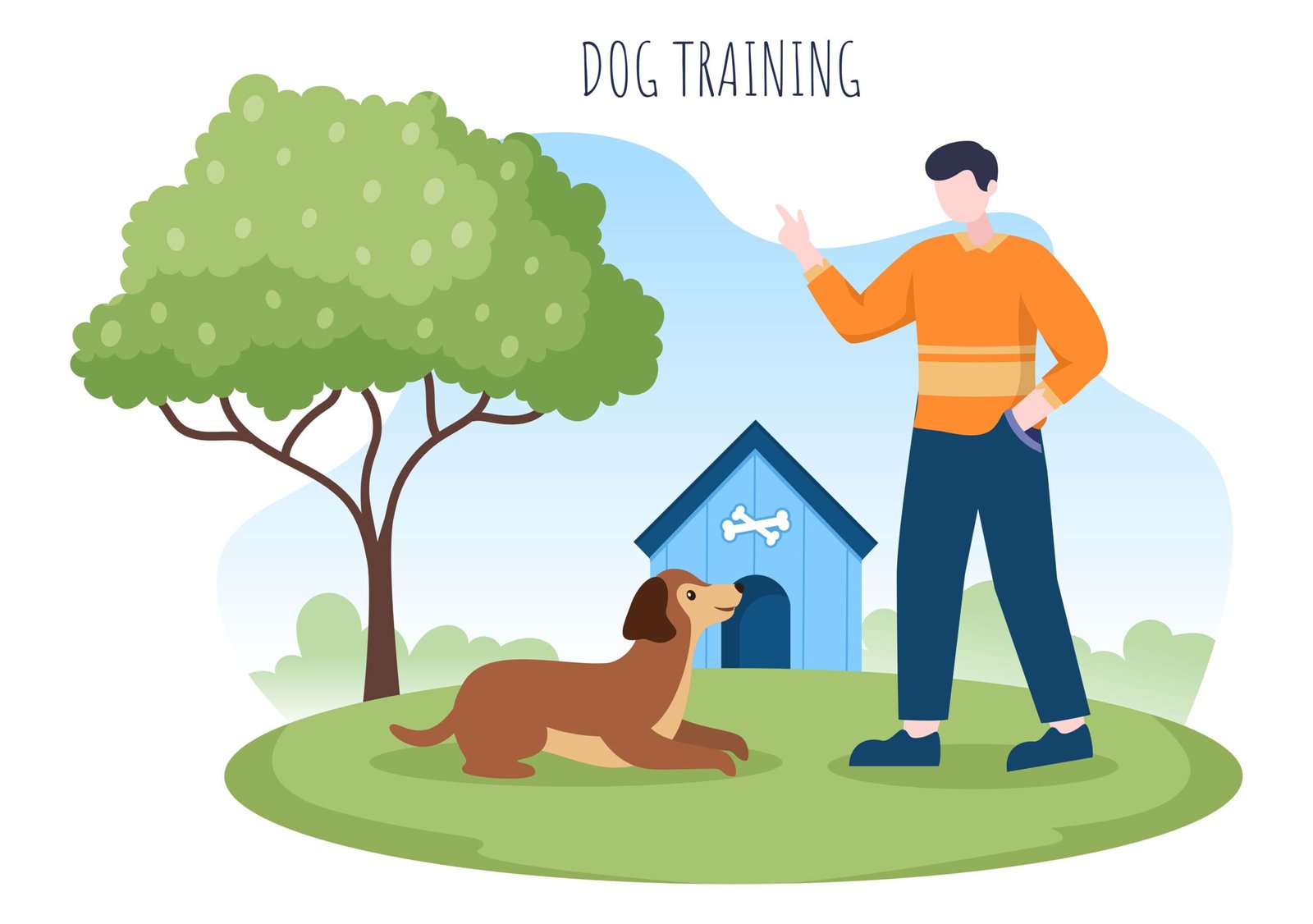Are you under the impression that older dogs are set in their ways and unable to learn new tricks? Well, think again! In this article, we will debunk the prevalent myth surrounding training older dogs and show you that age is no barrier when it comes to teaching an old dog new tricks. Whether your furry friend is a seasoned senior or a recent addition to your family, get ready to be amazed by the potential for growth and learning that lies within them. So, grab those treats and get ready to embark on an exciting journey of training and bonding with your furry companion!
Benefits of Training Older Dogs
Improved Behavior
Training older dogs can lead to significant improvements in their behavior. By teaching them basic obedience commands and reinforcing positive behaviors, you can address any problem behaviors they may have developed over the years. With consistent training, older dogs can learn to be well-behaved, responsive, and obedient companions.
Enhanced Bond with the Owner
Training older dogs provides an opportunity to strengthen the bond between you and your furry friend. Spending time together during training sessions helps build trust, communication, and mutual understanding. This deepened bond can lead to a more fulfilling and rewarding relationship.
Mental Stimulation and Fulfillment
Training sessions provide mental stimulation, which is crucial for dogs of all ages. Older dogs, in particular, can benefit from challenging their minds and staying mentally engaged. Training exercises their cognitive abilities, keeping their minds sharp, and providing a sense of fulfillment.
Maintaining Physical Fitness
Regular physical exercise is essential to keep older dogs in good shape. Training sessions that incorporate physical activities, such as agility exercises or low-impact exercises, help maintain their physical fitness. Keeping their bodies active and strong can support overall health and longevity.
Preventing Cognitive Decline
Just like humans, dogs can experience cognitive decline as they age. However, training can help slow down this process. Mental exercises and problem-solving tasks offered during training sessions can help keep their minds sharp and delay the onset of cognitive issues, such as memory loss or confusion.
Understanding the Myth
Origin and Popularization of the Myth
The saying “You can’t teach an old dog new tricks” stems from the belief that older dogs are set in their ways and resistant to learning. This myth likely originated from observations of the slower learning curve of older dogs compared to puppies. Over time, this belief has been perpetuated and popularized, leading people to overlook the trainability of older dogs.
Misinterpretation of Behavioural Patterns
The myth is partly based on the misconception that older dogs cannot change their behaviour due to ingrained habits. However, these behavioural patterns can often be attributed to a lack of consistent training or reinforcement. With proper training techniques, older dogs can learn new behaviours and overcome any undesirable habits.
The ‘Old Habits’ Misconception
Older dogs may have developed certain behaviour patterns over time, but that doesn’t mean they are unable to learn new ones. Dogs are capable of forming new habits even in their later years. With patience, consistency, and the right approach, you can successfully train an older dog to replace old habits with more desirable ones.
Overcoming Scepticism
Many dog owners may be sceptical about training their older dogs due to the prevailing myth. However, understanding that the myth is based on misconceptions can help overcome this scepticism. By educating oneself about the benefits of training older dogs and seeking guidance from professionals, dog owners can feel more confident in their ability to train their aging companions.
Factors Affecting Training
Individual Temperament and Personality
Each dog has a unique temperament and personality, which can influence their trainability. Some older dogs may be more stubborn or independent, while others may be eager to please and learn. Understanding and accommodating their individual traits can help tailor the training approach to best suit their needs.
Health and Physical Condition
The physical condition of an older dog can impact their training capabilities. Dogs with health issues, joint problems, or mobility limitations may require modifications to the training exercises or shorter, less strenuous sessions. Consulting with a veterinarian can ensure that the training program is appropriate for the dog’s health status.
Previous Training Experience
A dog’s previous training experience can play a role in their response to training as they age. Dogs with a history of positive reinforcement training may be more receptive to further training, while dogs with a lack of prior training may require more patience and foundational training. Understanding their history can help tailor the training approach accordingly.
Environmental Factors
The training environment can significantly impact a dog’s ability to focus and learn. Distractions, noise, or unfamiliar surroundings can make it difficult for an older dog to concentrate during training sessions. Creating a calm and quiet environment free from distractions can enhance the training experience and improve their ability to learn.
Consistency and Patience
Consistency and patience are crucial when training older dogs. It may take longer for them to grasp new concepts or refine their behaviors compared to younger dogs. Consistently using the same commands, rewards, and training techniques helps establish clear expectations and aids in learning. Patience is essential in allowing the dog to progress at their own pace.
Key Considerations for Training Older Dogs
Adapting Training Methods
When training older dogs, it is important to adapt training methods to suit their age and abilities. While the basic principles of dog training remain the same, adjustments may need to be made to accommodate any physical limitations or cognitive changes. Using strategies that focus on positive reinforcement and consistency can be particularly effective.
Positive Reinforcement Techniques
Positive reinforcement techniques are highly effective in training older dogs. Using rewards, such as treats or verbal praise, to reinforce desired behaviors encourages the dog to repeat those behaviours. This positive approach not only helps shape their behaviour but also boosts their confidence and eagerness to learn.
Understanding Limitations and Adapting Expectations
Older dogs may have physical limitations or slower learning curves compared to younger dogs. It is crucial to understand and respect these limitations when setting expectations for training. Adjusting your goals and being patient with the dog’s progress can help create a more realistic and successful training experience.
Slow and Steady Approach
Taking a slow and steady approach to training is essential when working with older dogs. Introduce new commands or behaviours gradually, giving them enough time to understand and practice each step. Rushing the training process can lead to confusion and frustration for both the dog and the trainer.
Maintaining a Calm and Supportive Environment
Creating a calm and supportive training environment is key to successful training sessions with older dogs. Avoid raising your voice or displaying frustration during training sessions, as this can be counterproductive. Maintaining a positive and patient attitude helps the dog feel safe and encourages their willingness to learn.
Training Techniques and Tips
Start with Basic Commands and Obedience Training
When training older dogs, it is important to start with the basics. Begin with simple commands such as sit, stay, and come. These fundamental commands provide a foundation for further training and establish clear communication between you and your dog.
Focus on Positive Reinforcement Rather than Punishment
Positive reinforcement, such as rewards and praise, is more effective and humane than punishment-based training methods. Rewarding and praising your older dog for desired behaviours helps reinforce those behaviours and encourages them to continue making progress. Punishment can create fear and anxiety, hindering the training process instead.
Use Age-Appropriate Exercises and Activities
Consider the age and physical condition of your older dog when selecting exercises and activities for training. High-impact activities may not be suitable for dogs with joint issues or arthritis. Seek exercises that are low-impact and gentle on their bodies, such as swimming or controlled walks, to keep them physically active without straining their joints.
Breaking Down Commands into Smaller Steps
Older dogs may require more time and repetition to master new commands. To facilitate their learning, break down complex commands into smaller, manageable steps. Gradually increase the difficulty as the dog becomes more comfortable and proficient with each step. This approach helps prevent frustration and keeps the dog engaged in the training process.
Patience and Repetition
When training older dogs, patience and repetition are key. Older dogs may need more time to understand and retain information compared to younger dogs. Consistently practicing commands and repeating training exercises helps reinforce their learning. Patience is crucial in allowing them to learn at their own pace without becoming overwhelmed.
Providing Mental Stimulation through Puzzles and Games
Training older dogs isn’t just about obedience commands; it’s also about providing mental stimulation. Incorporate puzzles, interactive toys, and mentally engaging games into their training routine. These activities challenge their problem-solving skills, prevent boredom, and keep their minds sharp.
Seeking Professional Help When Needed
If you’re struggling with training your older dog or facing specific challenges, don’t hesitate to seek professional help. A dog trainer experienced in working with older dogs can provide valuable guidance, tailor training methods to your dog’s needs, and help address any training hurdles you may encounter.
Adapting to Changing Needs
Modifying Exercise Routines
As dogs age, their exercise needs may change. It is important to modify their exercise routines to accommodate any physical limitations or health conditions. Consult with a veterinarian to determine the appropriate amount and type of exercise for your older dog. Adjustments may include shorter walks, low-impact activities, or incorporating more rest breaks.
Addressing Physical Limitations and Health Conditions
Older dogs may experience physical limitations or health conditions that require special attention during training. For example, a dog with arthritis may have difficulty performing certain commands that involve jumping or climbing. Modify training exercises to accommodate their needs and ensure their comfort and well-being.
Cognitive and Sensory Adaptations
Cognitive changes can occur as dogs age, affecting their learning abilities. Help them navigate these changes by providing clear, concise, and repetitive instructions during training. Additionally, consider any sensory changes, such as hearing or vision loss, and adjust your training techniques accordingly to ensure effective communication.
Incorporating Senior-Friendly Training Tools and Equipment
Using senior-friendly training tools and equipment can make training sessions more comfortable and successful for older dogs. For example, a harness or a ramp can assist dogs with mobility issues during training exercises. Soft and non-slip surfaces to prevent joint strains can also be beneficial during training.
Building a Strong Relationship
Establishing Trust and Respect
Training is an excellent opportunity to establish trust and respect between you and your older dog. By using positive reinforcement, understanding their cues, and responding to their needs, you foster a relationship built on mutual trust and respect.
Bonding Through Training Sessions
Training sessions provide a unique bonding experience for you and your older dog. Spending dedicated time together, working towards common goals, and celebrating achievements strengthens your bond. The connection built during training can extend beyond the training session, enhancing your overall relationship.
Consistency and Routine
Consistency and routine play a vital role in building a strong relationship with your older dog. Establishing consistent rules, training schedules, and expectations helps create a sense of security and predictability. This consistency builds trust and encourages your dog’s confidence in your leadership.
Understanding Aging-Related Changes
As your dog ages, they may experience physical or cognitive changes. Understanding and accommodating these changes is vital for a healthy relationship. Recognize any signs of discomfort, adapt training to suit their abilities, and provide the necessary support to ensure their comfort and well-being.
Ensuring a Comfortable Living Environment for Senior Dogs
Creating a comfortable living environment is essential for older dogs to thrive. Provide cozy bedding, ensure easy access to food and water, and make adjustments to accommodate any mobility challenges. A comfortable and supportive environment enhances their overall well-being and contributes to a strong relationship.
Common Challenges and Solutions
Stubbornness and Resistance
Older dogs may exhibit stubbornness or resistance during training due to their independence or ingrained habits. Patience, positive reinforcement, and breaking down commands into smaller steps can help overcome this challenge. Avoid using force or punishment, as it can exacerbate resistance.
Lack of Motivation
Some older dogs may exhibit a lack of motivation during training. This can be due to various factors such as physical discomfort or a decrease in energy levels. Adjusting the training routine to incorporate activities that motivate them, such as using their favorite treats or incorporating playtime, can help reignite their enthusiasm.
Adjusting to New Training Techniques
Older dogs who are accustomed to traditional or outdated training techniques may take time to adjust to newer, more positive reinforcement-based methods. Gradually introduce and explain the benefits of the new techniques, and ensure their comfort and understanding throughout the transition process.
Addressing Fears and Anxiety
Older dogs may develop fears or anxiety as they age, resulting in reluctance or resistance during training. It is important to create a safe and supportive environment, gradually expose them to triggering situations, and use positive reinforcement to build their confidence and reduce anxiety.
Dealing with Physical Limitations
Physical limitations, such as arthritis or joint pain, can pose challenges during training. Modify exercises and incorporate low-impact activities that are gentle on their bodies. Consult with a veterinarian for guidance on managing their physical limitations and adjusting training techniques accordingly.
The Importance of Exercise and Mental Stimulation
Benefits of Regular Exercise for Older Dogs
Regular exercise is crucial for the overall well-being of older dogs. Exercise helps maintain muscle mass, joint mobility, and a healthy weight. It also promotes cardiovascular health and supports mental stimulation, keeping them physically and mentally fit as they age.
Tailoring Exercise Routines to Individual Needs
Tailoring exercise routines to an individual dog’s needs is important as they age. Consider their health, fitness level, and any physical limitations. Incorporate activities that are low-impact, such as gentle walks, swimming, or stretching exercises. The goal is to keep them active while ensuring their well-being and comfort.
Incorporating Mental Stimulation Through Training
In addition to physical exercise, mental stimulation is vital for the well-being of older dogs. Incorporate training sessions that challenge their minds, engage their problem-solving abilities, and provide a sense of fulfillment. Mental stimulation can slow cognitive decline and promote overall cognitive health.
Preventing Boredom and Frustration
Older dogs can easily become bored or frustrated if their days lack mental and physical stimulation. Training helps prevent boredom by providing engaging activities and a structured routine. This not only keeps them mentally stimulated but also reduces the likelihood of destructive behaviours or excessive barking.
The Rewards of Training Older Dogs
Building Confidence and Self-Esteem
Training older dogs can boost their confidence and self-esteem. As they learn and master new commands and behaviours, their sense of accomplishment grows. This increased confidence can positively impact their overall well-being and behaviour.
Improved Socialization and Adaptability
Through training, older dogs become more comfortable and adaptable in various social situations. They learn how to interact with other dogs and humans, making outings and encounters more enjoyable for both the dog and the owner. Improved socialization also reduces the risk of aggression or fear-based behaviors.
Positive Impact on Overall Well-Being
Training not only benefits the specific behaviours and skills taught but also has a positive impact on the overall well-being of older dogs. It provides mental and physical stimulation, enhances their relationship with the owner, and helps maintain their cognitive functions. This holistic approach supports their overall health and happiness.
Creating a Harmonious and Fulfilling Relationship
Training older dogs facilitates a harmonious and fulfilling relationship between you and your furry companion. The time spent together during training strengthens your bond, improves communication, and fosters mutual understanding. This shared experience creates a deeper connection, leading to a more satisfying relationship for both of you.
In conclusion, training older dogs is not only possible, but it also offers numerous benefits for both the dog and the owner. By debunking the myth of “You can’t teach an old dog new tricks” and understanding the factors that affect training, you can overcome any challenges and build a strong relationship with your senior canine companion. With the right techniques, adaptations, and patience, training older dogs can be a rewarding and fulfilling experience that enhances their behavior, mental well-being, and overall quality of life.


